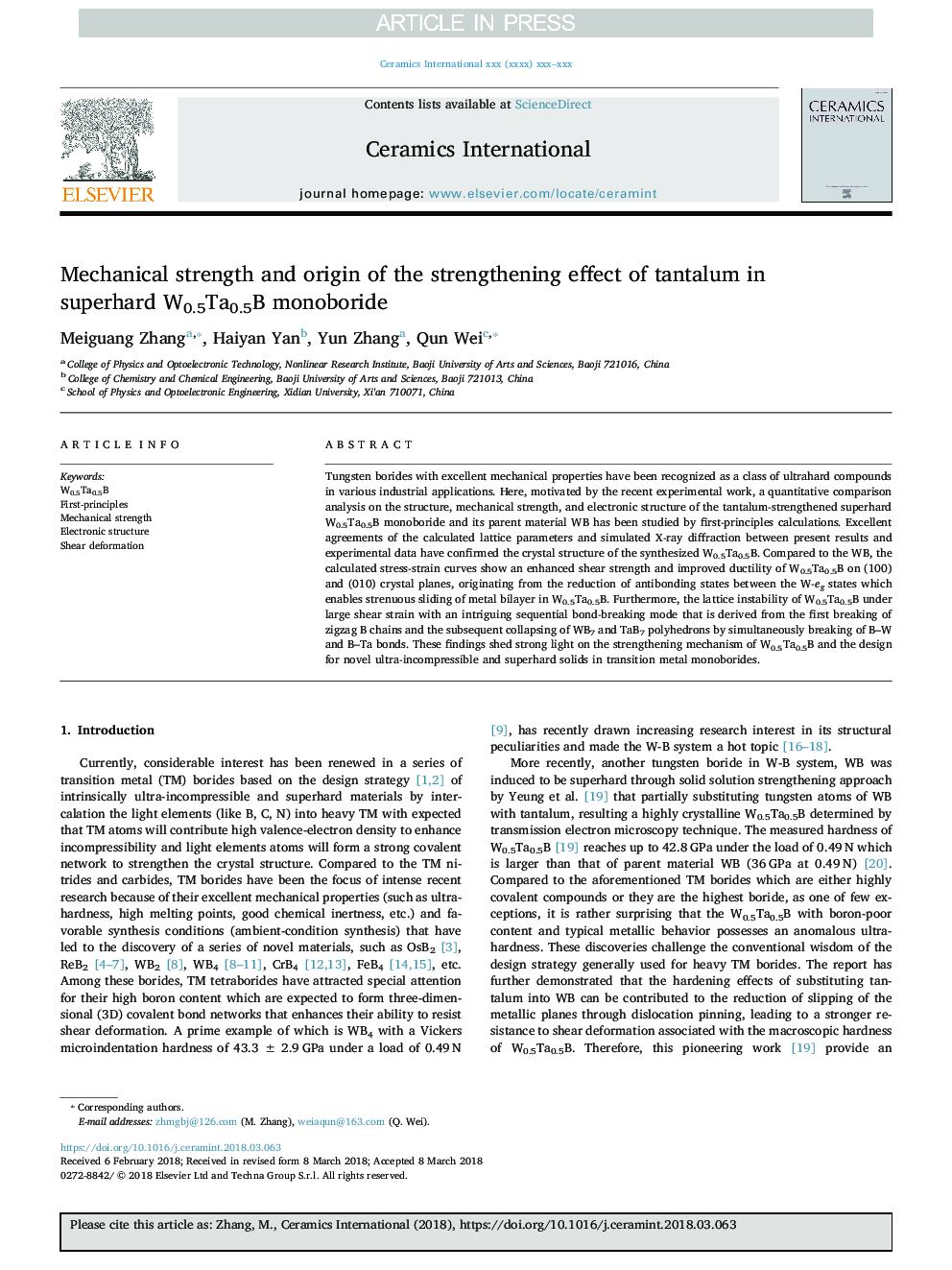| Article ID | Journal | Published Year | Pages | File Type |
|---|---|---|---|---|
| 7887177 | Ceramics International | 2018 | 7 Pages |
Abstract
Tungsten borides with excellent mechanical properties have been recognized as a class of ultrahard compounds in various industrial applications. Here, motivated by the recent experimental work, a quantitative comparison analysis on the structure, mechanical strength, and electronic structure of the tantalum-strengthened superhard W0.5Ta0.5B monoboride and its parent material WB has been studied by first-principles calculations. Excellent agreements of the calculated lattice parameters and simulated X-ray diffraction between present results and experimental data have confirmed the crystal structure of the synthesized W0.5Ta0.5B. Compared to the WB, the calculated stress-strain curves show an enhanced shear strength and improved ductility of W0.5Ta0.5B on (100) and (010) crystal planes, originating from the reduction of antibonding states between the W-eg states which enables strenuous sliding of metal bilayer in W0.5Ta0.5B. Furthermore, the lattice instability of W0.5Ta0.5B under large shear strain with an intriguing sequential bond-breaking mode that is derived from the first breaking of zigzag B chains and the subsequent collapsing of WB7 and TaB7 polyhedrons by simultaneously breaking of B-W and B-Ta bonds. These findings shed strong light on the strengthening mechanism of W0.5Ta0.5B and the design for novel ultra-incompressible and superhard solids in transition metal monoborides.
Related Topics
Physical Sciences and Engineering
Materials Science
Ceramics and Composites
Authors
Meiguang Zhang, Haiyan Yan, Yun Zhang, Qun Wei,
